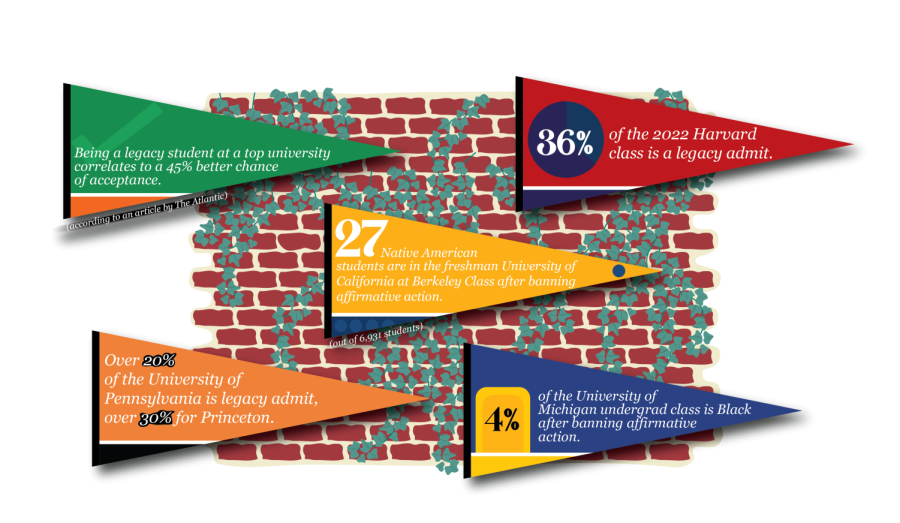This past month, the Supreme Court began its hearings for the cases Students for Fair Admissions v. Harvard College and Students for Fair Admissions v. University of North Carolina at Chapel Hill. With it, the conversations surrounding affirmative action have once again resurfaced in the American consciousness.
For minority students, the conversations belittling efforts at affirmative action are incredibly damaging. Watching classmates, teachers, and administrators across the nation praise the end of SAT/ACT testing because it “levels the playing field” only to claim that affirmative action is unfair has an unambiguous message: I support all efforts to create equality, unless I believe it will not benefit me.
Proponents against using race as a factor in admittance often argue that it’s the beginning of creating a more fair and just college admission process. However, when every other system in place today is everything but “fair and just” this becomes an excuse to disadvantage already struggling demographics. Whether it be access to standardized testing prep, access to educational/career opportunities, or simply how intelligent their instructors will believe they are, minority students are hurt at every turn.
THE ROLE OF LEGACY ADMISSION
The reality is affirmative action has become a red herring for many of the truly unfair parts of college admissions. The Harvard Crimson said that between 2014 and 2019 the acceptance rate for legacy students was 33 percent in comparison to the overall acceptance rate of 6 percent of those years’ cycles.
For the University of Pennsylvania, it was over 20%. For Princeton University (which has a 4% acceptance rate) it was over 30%. According to an article by The Atlantic, being a legacy student at a top university correlates to a 45% better chance of acceptance.
If eradicating affirmative action is an attempt to equalize college admission, then standard admissions processes should begin with examining the status of legacy admittance rather than targeting an already small percentage of minority students.
MINORITY REPRESENTATION
Moreover, the University of Michigan and University of California are clear examples that without factoring race into admissions numbers of minority students in undergraduate classes will continue to dwindle. Over 15 years ago, due to anti-affirmative action cases both institutions were forced to end their use in admissions. According to The New York Times, despite the millions of dollars poured into outreach programs (for The University of California, more than half a billion dollars) numbers of Black and other minority students stay remarkably low. Notably, the University of Michigan’s Black student population hit just 4%.
Affirmative action is an attempt to push socially, historically, and economically disadvantaged students into educational institutions that excluded them until just a generation ago. According to The Columbia Current, Columbia University did not accept Black students at any significant rate until the late 1960s.
BARRIERS TO EDUCATION
Black and Latino Americans face barriers in all sectors of life that prevent them from achieving the level of education of other groups in the U.S. even during the pre-2022 Supreme Court Case era.
Too often, when the standardized testing scores or GPA of Black and non-Black admissions are compared it becomes a source of contention. What this disregards is that affirmative action attempts to account for the barriers that Black students face that non-Black students do not.
The Hechinger columnist and published author Andre Perry said, “Standardized tests are better proxies for how many opportunities a student has been afforded than they are predictors for students’ potential.”
For Black students, those opportunities aren’t only economically based in nature but socially. According to the Brookings Institute, even when in better funded, predominantly white schools, any advantage Black students get in education is “…off set by the social costs of being in an overwhelmingly white environment.”
According to Johns Hopkins University, when evaluating the same Black student, a white teacher is around 30% less likely than a Black teacher to predict the student will complete a four year degree, and white teachers are 40% less likely to assume Black students will graduate from high school.
Another argument against affirmative action is that it will undermine the achievements of minority students who do manage to attend these institutions. However, this argument comes from a place of privilege.
It is exhausting to constantly prove that you deserve a seat at the table but, statistically, it is a privilege to have a seat to defend at all.
THE NEED FOR EQUALITY
“I thought that part of what it meant to be an American and to believe in American pluralism is that actually our institutions…are reflective of who we are as — as a people in all our variety,” said Supreme Court Justice Elena Kagan during one of the days of the hearing.
Education is the gateway for equality. In medicine, according to the University of Michigan, more Black physicians could reduce the Black-white mortality gap in heart disease by 19%. In law, according to the People for American Way and USA Today, an increase of people of color into our judicial system can help combat overcriminalization and unfair policy within those populations.
As Justice Kagan said, our institutions need to be reflective of the American people. We should push minority students into medicine, engineering, law, tech, and the like because it will better society as a whole. The social and economic barriers that people of color face breaking into academic institutions and higher institutions are clear. However, their presence within them is necessary.
Minority students still do not make up a proportional amount of undergraduate admittance classes under current case precedent. It is clear that current policy is not nearly as much of an advantage as it is often made out to be. Rather, it has allowed the general American news cycle and psyche to take their focus away from legacy admissions and other more significant admissions practices and instead demonize the admittance of high achieving minority students.
Affirmative action cannot end until as a nation we fully face the economic and social barriers we uphold. While affirmative action is not the sole solution for these barriers, it is a start to creating equality. When we choose to not support affirmative action, we choose to not recognize our past.




